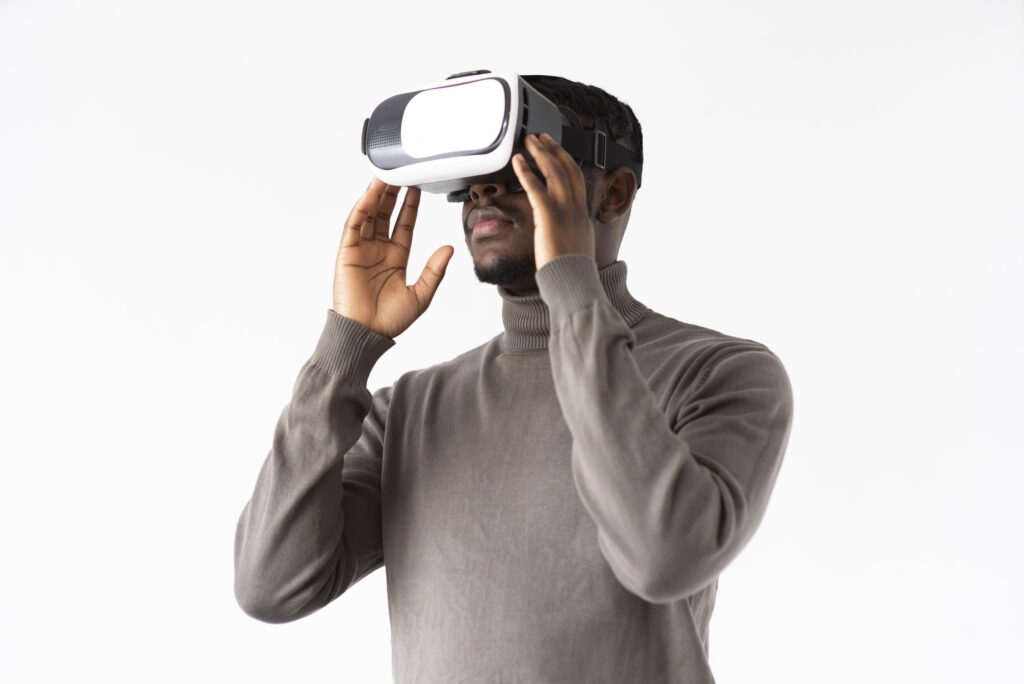Virtual reality (VR) is transforming how we play and experience games. Unlike traditional gaming, VR immerses players in digital worlds, making interactions feel real. This technology is advancing rapidly, with major companies investing heavily in hardware and software. But what does this mean for the future of gaming? From enhanced gameplay to new social experiences, VR is poised to redefine entertainment.
How Virtual Reality Works in Gaming
VR gaming relies on headsets that track head movements and adjust the display accordingly. Devices like the Meta Quest 3 and PlayStation VR2 use high-resolution screens, motion sensors, and hand controllers to create a seamless experience. Advanced systems even incorporate eye tracking and haptic feedback to deepen immersion. The goal is to make players feel present in the game world, whether they’re fighting aliens, exploring fantasy realms, or solving puzzles.

Key Benefits of VR in Gaming
1. Unmatched Immersion
VR places players inside the game, making every action feel real. Unlike flat screens, VR environments respond to movement, creating a sense of presence. For example, looking down in a VR horror game might reveal a shadow creeping up behind you—something impossible in traditional gaming.
2. New Forms of Gameplay
Developers are experimenting with mechanics unique to VR. Games like Half-Life: Alyx use physics-based interactions, allowing players to grab objects, open drawers, and aim weapons naturally. This level of interactivity changes how games are designed and played.
3. Social and Multiplayer Experiences
Platforms like VRChat and Rec Room let users interact in virtual spaces as customizable avatars. Players can attend concerts, collaborate on puzzles, or simply hang out, blurring the line between gaming and social media.
Challenges Facing VR Gaming
1. High Cost of Entry
Quality VR headsets remain expensive, with premium models costing over $1,000. Add a powerful gaming PC, and the price becomes prohibitive for many. Until prices drop, mass adoption will lag.
2. Motion Sickness Concerns
Some players experience nausea due to latency or unnatural movement in VR. Developers are mitigating this with teleportation mechanics and optimized frame rates, but it’s still a barrier.
3. Limited AAA Content
While indie VR titles thrive, big studios hesitate to invest heavily in VR-exclusive games due to the smaller audience. More high-profile releases are needed to attract mainstream gamers.
The Future of VR Gaming
1. Wireless and Standalone Headsets
Advances in processing power are making wireless VR more viable. Standalone devices like the Meta Quest Pro eliminate the need for external hardware, offering greater accessibility.
2. Haptic Feedback and Full-Body Tracking
Future VR systems may include gloves or suits that simulate touch and movement. This could revolutionize genres like horror, sports, and simulation games.
3. Integration with Augmented Reality (AR)
Mixed-reality games, blending virtual and physical worlds, are gaining traction. Imagine battling digital monsters in your living room or solving AR puzzles on your kitchen table.
FAQ
Q: Will VR replace traditional gaming?
A: Unlikely. VR offers unique experiences but won’t eliminate console or PC gaming. Both will coexist, catering to different preferences.
Q: How can I start with VR gaming?
A: Begin with an affordable headset like the Meta Quest 3, which doesn’t require a PC. Explore free demos before investing in full games.
Q: Is VR gaming safe for kids?
A: Most headsets recommend ages 12+ due to potential eye strain and content suitability. Parental controls and supervised play are advised.
Final Thoughts
VR gaming is more than a trend—it’s a shift in how we interact with digital worlds. While challenges like cost and motion sickness persist, technological advancements are addressing these issues. As VR becomes more accessible and content-rich, its role in gaming will only grow. For players willing to dive in, the future looks immersive.

